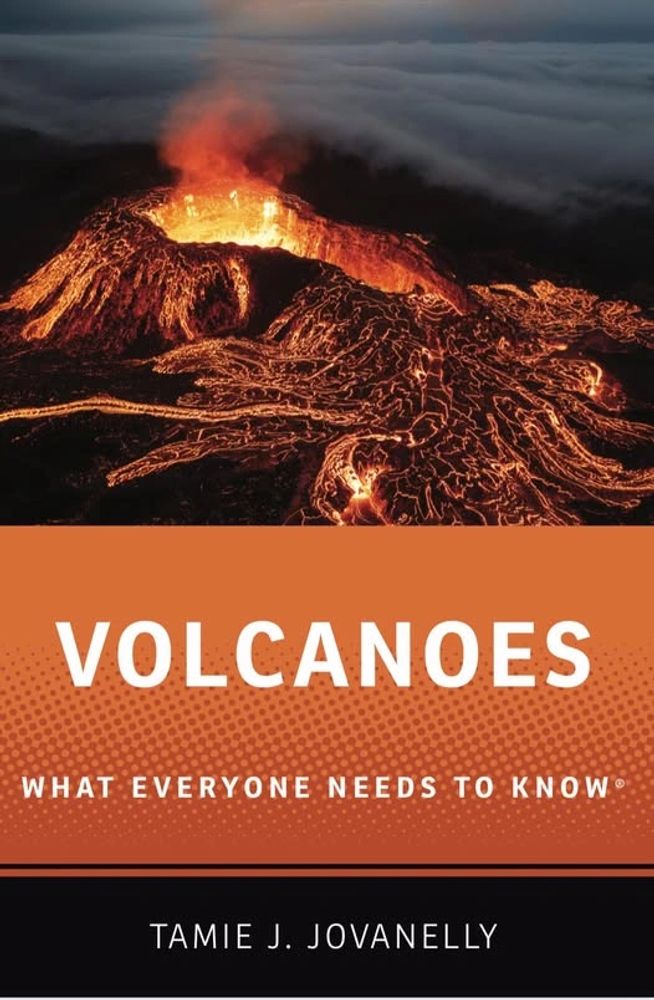
Welcome
VOLCANOES WHAT EVERYONE NEEDS TO KNOW
Your ultimate guide to understanding one of nature’s most fascinating and powerful forces.

Your ultimate guide to understanding one of nature’s most fascinating and powerful forces.
Volcanoes, which result from magma erupting on the Earth's surface, are formed by two different processes: shifting of tectonic plates or mantle plume (hot spot) upwelling. Plate tectonics is a theory that the Earth's lithosphere is divided into several large, platelike sections that move as distinct landmasses (Figure 1.5). Today, there are seven major plates and eight minor plates. The most enormous plates include the Antarctic, Eurasian, and North American. Although rigid, the lithospheric plates are not stationary. Instead, due to the continual movement of lower mantle convection cells, the plates systematically converge (come together) or diverge (move apart). Every 500 My, the crust that forms continental land masses will collide to create a supercontinent called Pangea.
While volcanoes can form at either convergent or divergent plate boundaries, the most destructive ones are found as plates are pushed together to form subduction zones. A subduction zone is a collision between two of Earth's tectonic plates, where one plate sinks into the mantle underneath the other plate, forming a trench (Figure 1.6). Convergent plate boundaries forming subduction zones are described by the types of lithospheric crust (oceanic or continental) that are colliding to result in ocean-continent convergence or ocean-ocean convergence. In the first scenario, the oceanic plate made of basalt has a greater density and will subduct underneath the lighter granitic continental plate. Next, suppose the plates are composed of the same oceanic basalt rock type. In that case, the older plate is usually denser and will be the subducting plate. Conversely, when two plates of continental land mass collide, as in the Himalayas, they are equal in density and will pile on top of the surface, creating tall mountains instead of a subduction zone. Without a subduction zone, volcanoes cannot form.
In locations where oceanic-continental crust converges, a continental volcanic arc can form, like the Andean Volcanic Belt along the west coast of South America from Argentina to Peru. Similarly, where oceanic-oceanic crust convergence occurs, a volcanic arc, a chain of volcanic islands that parallels a trench, can form, like the Aleutians Islands (Alaska). In both scenarios, more magma can be produced when ocean water is present at the subduction zone because water lowers the melting temperature of the solid rock being subducted. This process is referred to as flux melting. The abundance of magma at subduction zones creates a specific type of volcano called a stratovolcano. Additionally, water in magma creates a more significant potential for explosive eruptions.
A divergent plate boundary, called the Mid Ocean Ridge, is found at the bottom of oceans worldwide. Here, two plates are pulled apart to create a rift, or conduit, for magma to pile onto the ocean floor that can build a submarine volcano. These volcanoes are usually hidden above sea level as they are thousands of meters below the ocean surface. This type of volcanic activity is accredited to making large amounts of new oceanic crust. It accounts for approximately 75 percent of all effusive eruptions annually.
Volcanoes can also be formed by the upwelling of magma within a plate, termed hot spot. While there are some 50 hot spots found on the Earth's surface, the mechanics of how and where they form are debated by geologists. When the localized magma plumes breach the surface, they create a volcano. If a hot spot occurs in the ocean, a shield volcano will typically result. Realizing that hot spots remain stationary while plates move over the top is essential. This can result in a chain of volcanic islands, like the Galapagos Islands. The oldest islands are located the furthest away from the hot spot. They are no longer volcanically active as they have been transported away from the magma source.
You can send me a message or ask me a general question using this form. Additionally, I am happy to speak to your group via Zoom or in-person!
I look forward to hearing from you and I will respond to your email as soon as possible.
Atlanta, GA 30308, USA
Get advanced teaser copy from new releases!
We use cookies to analyze website traffic and optimize your website experience. By accepting our use of cookies, your data will be aggregated with all other user data.